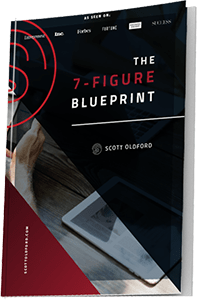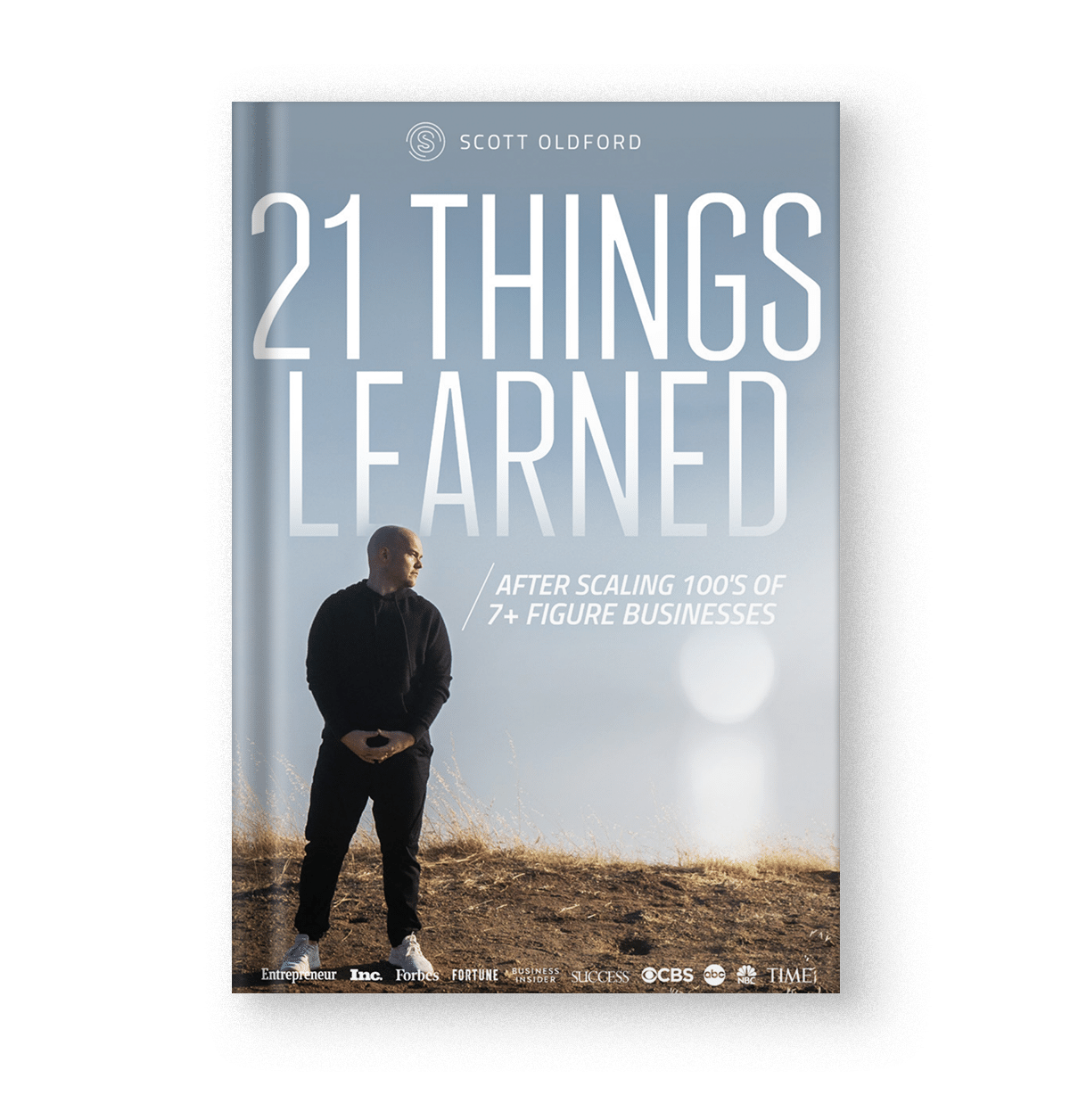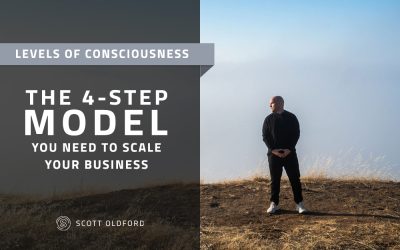Here’s the step-by-step process of scaling a business from six to seven figures.
Note: You can likely change these steps. I’m no expert or guru on scaling; I’ve just done it enough times, using this method, that it’s worked for me.1. Get clear about exactly what you deliver.
Take a look at your products and services, then calculate the profit margin of those products and services as if you had to hire someone else to deliver it. Keep the products with the highest profit margin. Kill the rest (for now).2. Get clear on your audience.
Your first $100K is typically generated from tailoring products and services to anyone who is willing to purchase from you. Now, it’s time to get very specific so people know exactly who you are helping and how you help them.3. Don’t get too set on a “vision” or a “mission.”
While it is important to understand your product and audience, you may have to pivot. This means that PERSONALLY you can have a vision, but your business should be flexible at this stage. So remain flexible about your business’s vision until you prove a specific model. Otherwise, it may keep you up at night and keep you away from reaching your full potential.4. Eliminate all other opportunities once you know you want to scale.
I’m talking every other business idea. I remember being at a dinner with Zach Obront (Tucker Max’s business partner) at Book In A Box. What he said to me then was one of the most impactful pieces of advice I ever got from anyone: “Scott, the compound effect of focus is so high that when you’re starting out, you must be obsessed with taking ALL ideas, concepts and opportunities and throwing them out.” This level of focus is required for MASSIVE momentum and to reduce friction.5. Understand why someone will actually buy from you.
Is it because of YOU as an entrepreneur, because you have a certain “magic?” Or is it because of the transformation you can deliver to them through your product or service? If it’s because of YOUR magic, this is a roadblock. Remember, the sale process is a simple one…- Find someone’s pain.
- Find someone’s vision.
- Find the gap (and make it clear how you can help them fill that gap).
- Obtain the prospect’s commitment to bridge that gap with you.
6. Understand what your zone of genius is.
This means taking a look at EVERYTHING you do in your business, then simply taking everything that you suck at – and what you DON’T enjoy doing – and STOP doing those things. In my business, I’m good at…- Keeping money in the bank
- Ideas, concepts and strategy
- Content creation
- Partnerships and new channels
- Mediating attention
7. Understand what it will take to get you to where you want to grow.
If you want to grow to $1 million, take a look at how many customers you need to ge there. In order to get that many customers, understand how many sales conversations are required. Based on that number, determine how many leads you need and at what percentage of those leads need to purchase. Here’s a quick example of how doing the simple math can help you make better decisions on how to grow your business… If your goal is $1 million in revenue… And your sales price is $10,000… Then you need to generate 100 total sales to reach $1 million in revenue (100 x $10,000 = $1 million.) The amount of appointments you need to generate depends on the percentage of appointments you close as sales. So assuming you close 20% of all the prospects that you speak with, you’d need to book 500 calls (500 / 20% = 100 Sales [@ $10,000 revenue per sale] = $1 million in revenue. Then, considering all of that, what does your team need to look like in order to 1) achieve this level of sales volume and 2) turnaround and deliver the product/service at this volume? Remember… the idea is to create leverage as much as possible. So if it can be leveraged, make sure you take it off your plate so you can get to #6.8. Decide what type of life you want.
This is something that most people ignore when growing a business. But this is something that will largely change either your PROFIT MARGIN or your RATE OF GROWTH. If you want fast growth, but more free time, your profit margin will suffer. If you want fast growth, but a higher profit margin, your rate (time) of growth will be lower. ====Now that you have a lot of your planning and high-level strategy developed, it’s on to the next part – implementation.
====In order to grow from $100K per year to $1M per year, it’s a ten fold increase… but it doesn’t take ten times the work.
9. Figure out which piece you’re weak on.
Is it marketing and / or sales? Or is it operations? You are either good at one or the other; most aren’t good at both. And then hire your #2… This is critical… If you are good at marketing and sales and have no one for the operations, you’ll get yourself into a hot mess. If you are good at operations, but not marketing and sales, you’ll have no customers to buy your stuff.10. Plan and implement a marketing funnel that can turn strangers into customers.
Base it on the first part of this strategy. Think about your product, your sale cycle / conversation, and your audience, and base it on the numbers you need to reach $1 million. If you don’t know your finances, you’ll be screwed. I’d suggest the SSF Method or our LeadCraft Program for this.11. Build an audience / community beyond leads.
If this means creating a Facebook group, LinkedIn group, MeetUp group, or some other community-building group… do it. It’s imperative that you build a business that has a community. Every single lead coming through the door should have the chance to both become a customer and become part of your community. You are future-proofing yourself by doing this. Just look at people like Jesse Elder, AJ Rivera, Dan Meredith, Justin Devonshire, Justin Livingston and others who have essentially created a place where failing is almost impossible because they have created such great communities around their businesses.12. Be a “big” fish in a small pond.
This is actually really important. If you don’t do it, your message won’t get signal in the noise. It is important that you appear “omnipresent” to those inside your community and those that you attract… that you are always in front of them. You want to make them feel like you are the ONLY girl in the world for them.13. Hire the RIGHT people at the RIGHT time.
14. Invest in relationships and knowledge.
In 2016, I spent over $250K on masterminds and finding people that I wanted to know better. The result? 2017 has been amazing because of it. Invest HEAVILY into relationships and knowledge. Expect NOTHING in return, but realize you will get a LOT in return.15. Get a guide up the mountain.
If it wasn’t for a few key people in my life that have been mentors and coaches, I would never have had any momentum. Remember… business isn’t this unique game. We all have the same problems, just with our own perspective. If you can buy access to solving a problem in five minutes that would otherwise take you four weeks, do it. Value that five minutes and look at the money and time you’ll save.16. Double down on what actually works.
When you see something working… DOUBLE down and do it quickly! Most opportunities for new growth go away quickly. If you see Facebook ads or joint-venture relationships working, double down on them and do it quickly so you can secure that revenue for yourself.17. Innovate and iterate QUICKLY.
Every single time you do something, do it quickly and don’t make it perfect. This is required for momentum. Innovate and iterate quickly… always change SOMETHING when you’re doing ANYTHING so you can compare. There are two levels of feedback- Data
- Gut
18. Pay attention and DIVE into the deep end.
Every 30 days, write down EXACTLY WHERE you are… and all the risks and things that are going right and wrong. Then, look at what you can eliminate in the next 30 days. Wherever there are blind spots, share with them your team. Make sure you are working towards moving away from those blind spots.19. Drink your own Kool-Aid (but don’t swim in it).
It’s important that you believe in yourself… so drink your own kool-aid. However, don’t become arrogant enough to swim in it. You are doing great stuff, but so is everyone else. Stay level-headed. Regardless of how much #winning you do, someone else will always win more than you. Respect that.- Diversify your lead generation strategy.
21. Diversify your revenue stream.
This means that you should have a couple different sources of revenue. You want to ensure that if something didn’t work, you wouldn’t be screwed.22. Use periodic promotions to generate cash infusions.
At some point during your growth pattern, I suggest running promotions that will enable to you generate higher amounts of revenue than your normal pace allows. This means doing a “launch” or something similar that allows you to generate three to four months of cashflow in less than two weeks. This could be launching a new product to your audience…It could be have a partner launch…It could be trading some time for money, for example… Getting your bank account to the place where it has ninety days of cash in it (which typically doesn’t happen in fast-growth) is CRITICAL so you can make long-term choices.23. Use 90-day plans.
I write myself a letter every ninety days. Further, I write down everything I want to accomplish in the next ninety days, each on its own sticky note. I then put them on my wall, broken down in 30-day intervals. This allows me to easily know if I’m getting closer to (or further away from) where I want to go. Review this daily, weekly, monthly and then quarterly, as follows:- Daily for five minutes
- Weekly for thirty minutes
- Monthly for an hour
- Quarterly for a day
24. Stack “short-term” and “long-term” together.
There are short-term choices and long-term choices. “Short-term” keeps money in the bank. “Long-term” allows you to have a sustainable business. As an entrepreneur, you need both. You may need to host weekly live webinars while still working on your evergreen marketing system to ensure you hit your revenue goals. You need cash. You can stack your short-term and long-term, and that’s OKAY.25. Growth SUCKS cash.
If I kept all the money we generated, I might actually be rich. Growth SUCKS cash. But it also allows you to quickly get leverage and get to a place where you can become profitable. While growing, you shouldn’t change your lifestyle. Keep your expenses as low as possible, until you have true sustainability.26. Remember where you’ve come from.
It’s difficult to remember our past. As much as possible, and at least every ninety days, you and your team should write down EVERYTHING that you have accomplished. Take sometime to reflect and have perspective. Pat yourself on the back. You’ve done a good job!27. Keep taking things off your plate.
Keep delegating. Keep working towards your “zone of genius”. Keep assessing what you do on a weekly basis and get to your place of pure genius.28. Get a GOOD accountant.
Hire a financial company that doesn’t just do “tax management.” Make sure you get someone who is MANAGING your finances and helping you grow the business. Warren Buffett says the #1 skill you need in business is ‘accounting.’ Most people forget this. If you don’t know your finances, you don’t have a business. If you make your choices based solely on your current bank balance, with no further financial insight, then you’re screwing yourself. You’re basing your business on dumb luck. Fly by numbers, not by sight.29. Work Hard… Work Smart… Stay Focused.
As a last note…work hard, but work smart. Further, stay focused. Be yourself. Be comfortable in your own skin. Don’t try to impress others. Just do it because it’s important to have freedom, impact and to have money in your life. Don’t follow too many people. Simply look in the mirror. You ARE ENOUGH. And I believe in you. Want to take the next step to 7-figures and get a team of experts around you to help you scale your business? Maybe you should hop on a call with my team to see if we can help. Check it out here.
DISCOVER THE SIX PILLARS OF BUSINESS SUCCESS
Grab your copy of ‘The 7 Figure Blueprint’ now >>




